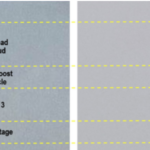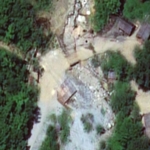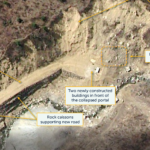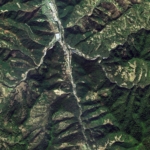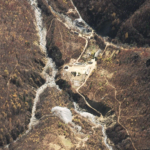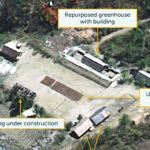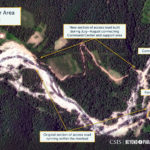September 6, 2023, by Victor Cha and Ellen Kim—
The White House’s acknowledgement this…
August 17, 2023, by Theodore Postol—
Russia's multi-warhead intercontinental ballistic missile…
June 27, 2023, by Joseph S. Bermudez Jr., Victor Cha and Jennifer Jun—
Recent satellite imagery of the Punggye-ri Nuclear Test Facility shows minor activity at the main administration area and no new activity at the tunnels. However, preparations at Tunnel No. 3 are considered to have long been completed. .. Close up view of the portal to Tunnel No. 3, June 19, 2023. No significant…
May 4, 2023, by Joseph S. Bermudez Jr., Victor Cha and Jennifer Jun—
Recent satellite imagery shows new activity at the Punggye-ri Nuclear Test Facility, including the completion of road construction and new structures by the collapsed portal of Tunnel No. 4... Close up view of the road and two new buildings outside of the collapsed portal…
March 30, 2023, by Joseph S. Bermudez Jr. and Jennifer Jun—
Satellite imagery analysis provides an in-depth understanding of the Manpo Unha Factory, an important but previously little-known component of North Korea's nuclear infrastructure, and its historical development... Overview of the Manpo Unha Factory, September 28, 2022 (Copyright © Airbus DS 2023) Image…
March 27, 2023, by Joseph S. Bermudez Jr. and Jennifer Jun—
Imagery analysis has identified the Manpo Unha Factory as an important but little-known component of North Korea's nuclear infrastructure as the prime supplier of bulk chemicals to the Yongbyon Nuclear Research Center... Location map showing the city of Manpo and the Manpo Unha Factory, March 1, 2023.…
November 7, 2022, by Joseph S. Bermudez Jr., Victor Cha and Jennifer Jun—
North Korea has shown an unprecedented level of provocations over the past week. As tensions rise, eyes are also on Punggye-ri, the expected site of the seventh nuclear test. This report provides an updated view of the facility... Based on the latest satellite image obtained on November 7, 2022, a day before the…
October 20, 2022, by Joseph S. Bermudez Jr., Victor Cha and Jennifer Jun—
North Korea's seventh nuclear test is assessed to be carried out in the coming weeks. This report provides an updated view of the Punggye-ri Nuclear Test Facility, where the test will almost assuredly take place... There is no new activity at Tunnel No. 3. This is expected because both the…
October 3, 2022, by Joseph S. Bermudez Jr., Victor Cha and Jennifer Jun—
Recent satellite images of the Punggye-ri Nuclear Test Facility show new clearing and construction near Tunnel No. 4. As expected, no new activity was observed at Tunnel No. 3, where North Korea is assessed to have finished all preparations for a test.
August 29, 2022, by Joseph S. Bermudez Jr., Victor Cha and Jennifer Jun—
Recent satellite images show efforts to mitigate flood damage at the Punggye-ri Nuclear Test Facility, where North Korea has finished all preparations for conducting a seventh nuclear test. .. No significant activity is observed at Tunnel No. 3 of the Punggye-ri Nuclear Test Facility.…


